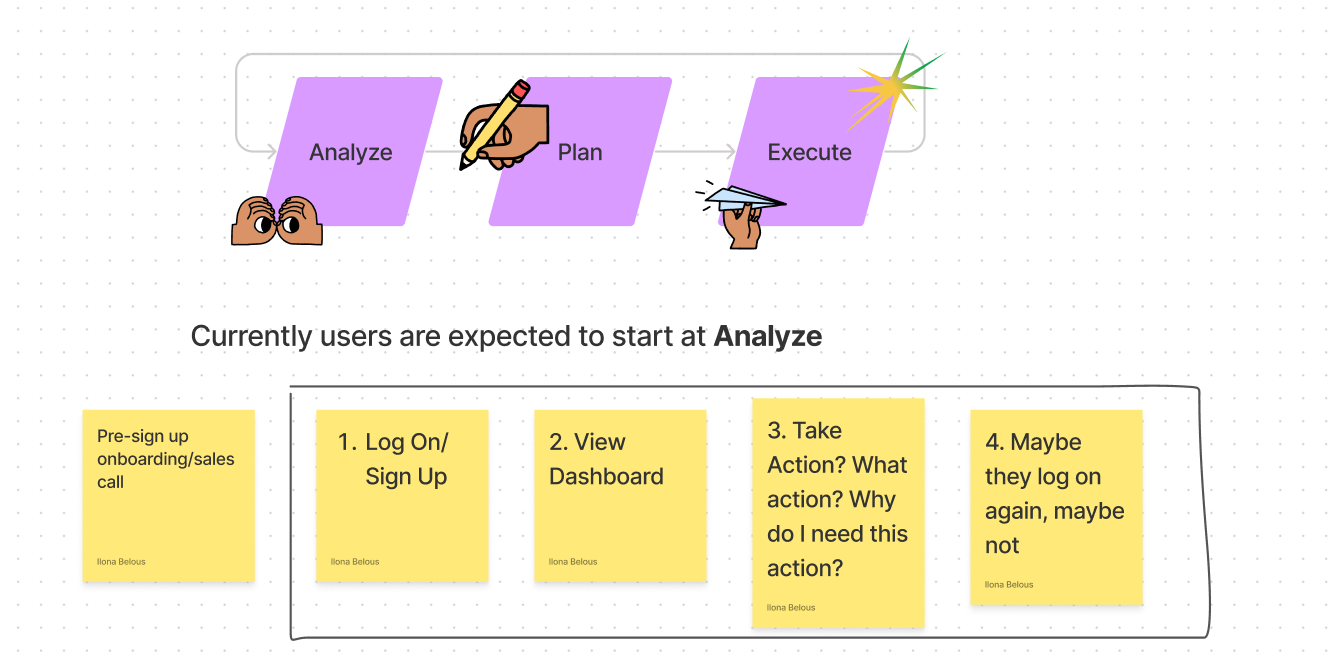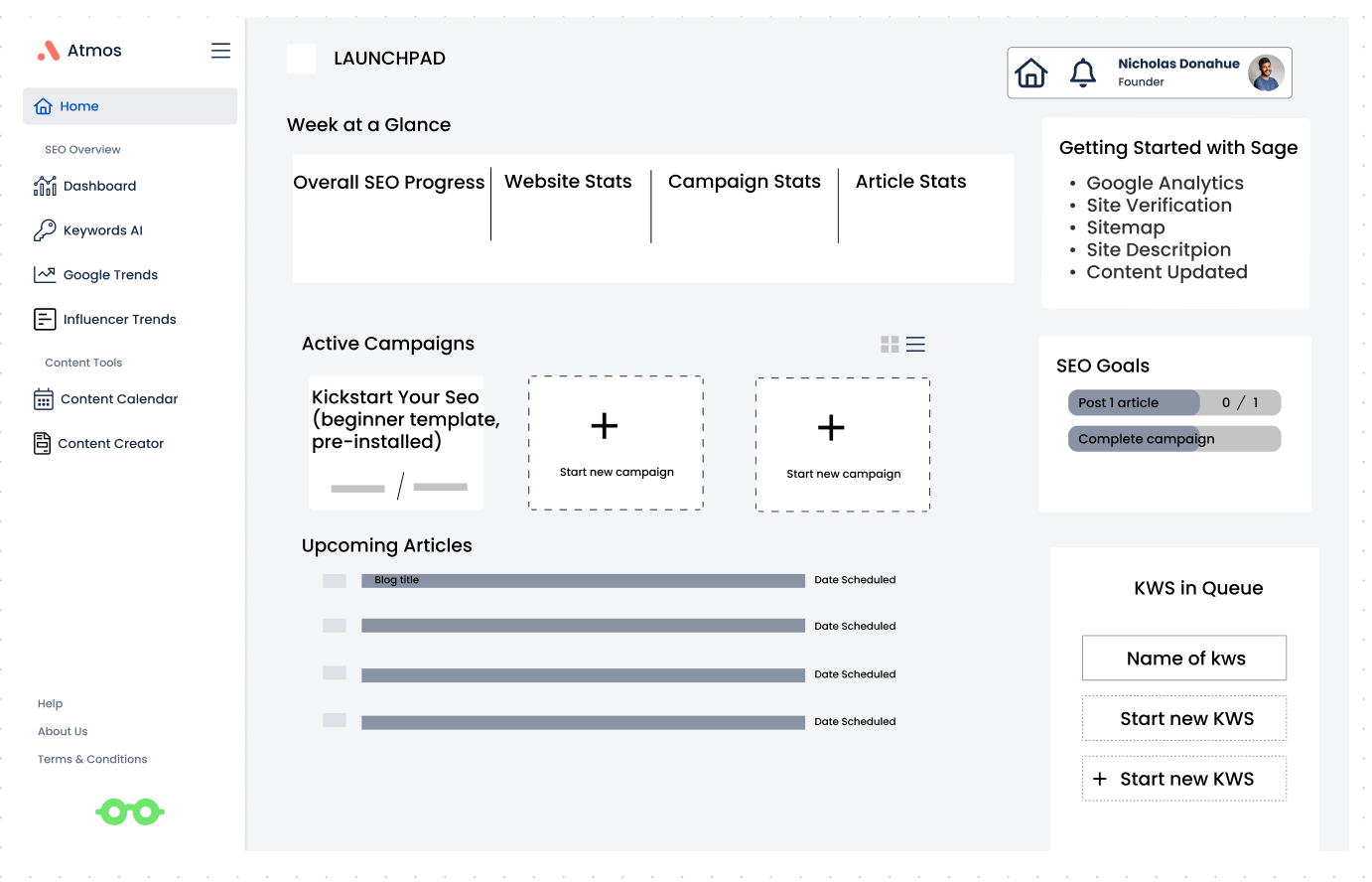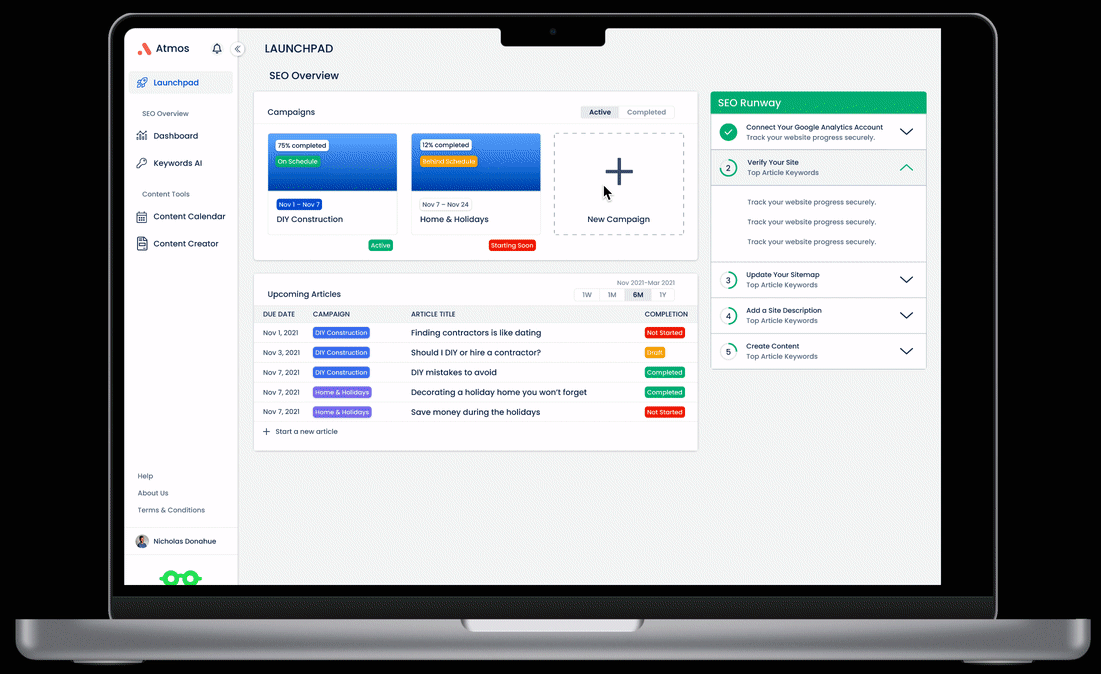Designing an MVP platform for small businesses to effortlessly craft content that matters.
As our worlds become more digital, people rely on finding their favorite products and services through search engines like Google. Search engines choose the right result for each individual’s unique search request, but getting first page results for small businesses and startups takes months of effort, expert understanding of search engine optimization (SEO), and a large financial investment with variable results. For decades, creating an effective search engine optimization strategy was monopolized by marketing agencies and marketing consultants. Sage SEO approached me with a project brief to create an MVP product. Their goal was to make SEO content marketing simple for everyday business owners.
We Asked:
How might we make put content marketing back into the hands of small businesses and startups?
Designing a place to start
Initially, the stakeholders prioritized creating a dashboard. During the exploration process, I wondered: Why did we start from the Dashboard (Analyze phase) if users need to be in the Planning/Executing phase when they log on or sign up? In order to get results from content marketing, users have to make content, which means we needed to drive a behavior change. Without measurable results in website traffic, the impact of a dashboard would be meaningless.
Thinking through the process
I knew two things about users when they onboard:
Customers have already completed the Analyze phase during their sales call
In order for Sage customers to be successful, they have to Plan and Execute
One of the challenges was that we didn’t have the time to conduct direct research, so I relied more heavily on secondary research to guide my direction. During secondary research, I learned about marketing campaigns and the impact they have on SEO. I explored the idea of campaigns as a way to help drive results in Sage customers.
A high-level view via the Launchpad
I pushed for the idea of a Launchpad – a centralized space to get a high-level view of users’ SEO strategy and formulate a plan. The wireframes prioritized “spaces” to help users quickly scan the page and make decisions about their next actions. It was important to make it easy for users to not only complete high-level planning, but also jump into upcoming articles and begin working right away.
High fidelity designs for campaign creation
Setting up the basics
I thought about how users might go about creating content that leads to results. As with many different types of marketing campaigns, results come from consistent action. Designing a posting schedule made sense for consistency in topics, planning, and execution.
Detailed planning
Instead of manually scheduling each article, our posting schedule made it easy for a calendar to auto-populate. To adjust the calendar, users can use familiar mental models – by dragging and dropping they can organize the calendar to their preferred schedule. Easy!
Article details
The next thing I considered is what happens when a user clicks on an article. The most important features to include were article details, an article preview, and a way to edit the article. We also included an option to delete an article. Using the principles of hierarchy and Gestalt’s law, the article is easy to scan and inviting to edit.
It wasn’t until later in the project that I was able to validate this idea of campaigns with actual customers. With the help of a stakeholder in the project, we did a version of a pretotype. We crafted an email to customers, including:
A short introduction to campaigns and why they’re important
Questions asking them:
What campaign theme would you like to focus on for the upcoming month?
What 4 articles would you like to support your campaign?
What target audience would you like to prioritize?
We received a handful of responses back, but it was clear that the concept of campaigns was too foreign for our customers and we needed to reconsider some aspects of the design to simplify it for them. We ended up renaming campaigns to “Monthly Articles” and adding a form to help them prioritize what each article is about.
One of the biggest takeaways in this project is the idea that while data is important, it doesn’t always show the full picture. I think back on Malcolm Gladwell’s book, the Tipping Point, which dives into why some ideas rapidly spread like a fire, and some ideas, executed similarly, are duds. The book illustrates that data alone cannot facilitate decision-making. As a designer, I have to understand the context around the data and the context of the company I’m working with. As Malcolm Gladwell writes, “There is a simple way to package information that, under the right circumstances, can make it irresistible. All you have to do is find it.”
When we changed the campaigns to language that made more sense to the customers, they were able to use the tool in a more effective way. Even though the behaviors were the same, we had packaged it differently to make it understandable for customers. Through this project, I understood that following data is one thing, but understanding the context is more meaningful.




